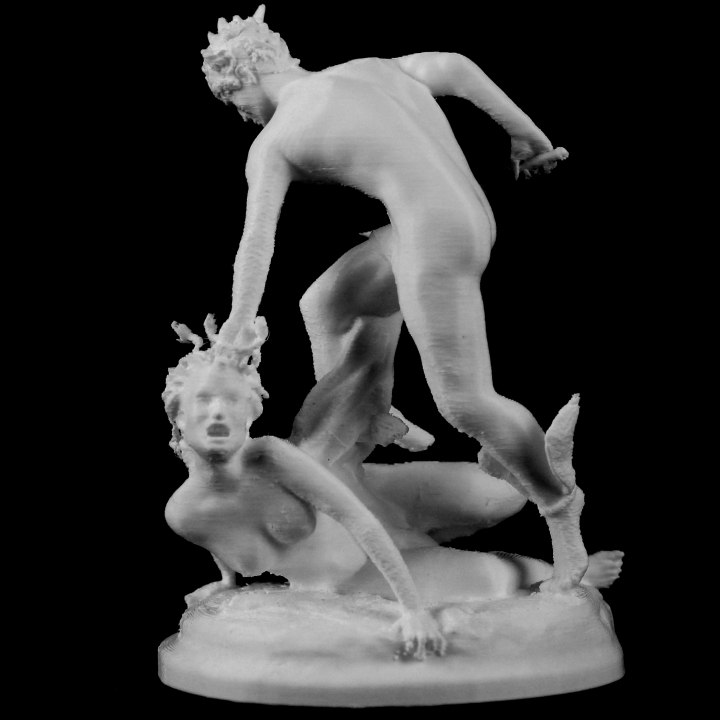
Perseus and the Gorgon
myminifactory
This is a slightly larger than life marble sculpture depicting Perseus and Medusa, it was sculpted by Laurent Honoré Marqueste (1875-1903) and is on permanent display at the Glyptothek in Copenhagen. The subject matter depicts the moment in which Perseus beheads the Gorgon Medusa; When Perseus was grown, Polydectes came to fall in love with the beautiful Danaë. Perseus believed Polydectes was less than honourable, and protected his mother from him; then Polydectes plotted to send Perseus away in disgrace. He held a large banquet where each guest was expected to bring a gift. Polydectes requested that the guests bring horses, under the pretense that he was collecting contributions for the hand of Hippodamia, "tamer of horses". Perseus had no horse to give, so he asked Polydectes to name the gift; he would not refuse it. Polydectes held Perseus to his rash promise and demanded the head of the only mortal Gorgon, Medusa, whose eyes turned people to stone. Ovid's account of Medusa's mortality tells that she had once been a woman, vain of her beautiful hair, who had lain with Poseidon in the Temple of Athena. In punishment for the desecration of her temple, Athena had changed Medusa's hair into hideous snakes "that she may alarm her surprised foes with terror". Athena instructed Perseus to find the Hesperides, who were entrusted with weapons needed to defeat the Gorgon. Following Athena's guidance, Perseus sought out the Graeae, sisters of the Gorgons, to demand the whereabouts of the Hesperides, the nymphs tending Hera's orchard. The Graeae were three perpetually old women, who had to share a single eye. As the women passed the eye from one to another, Perseus snatched it from them, holding it for ransom in return for the location of the nymphs. When the sisters led him to the Hesperides, he returned what he had taken. From the Hesperides he received a knapsack (kibisis) to safely contain Medusa's head. Zeus gave him an adamantine sword (a Harpe) and Hades' helm of darkness to hide. Hermes lent Perseus winged sandals to fly, while Athena gave him a polished shield. Perseus then proceeded to the Gorgons' cave. In the cave he came upon the sleeping Medusa. By viewing Medusa's reflection in his polished shield, he safely approached and cut off her head. From her neck sprang Pegasus ("he who sprang") and Chrysaor ("sword of gold"), the result of Poseidon and Medusa's meeting. The other two Gorgons pursued Perseus, but, wearing his helm of darkness, he escaped. From here he proceeded to visit Atlas, king of Mauretania, who had refused him hospitality; in revenge Perseus turned him to stone (Hence the Atlas Mountains). This object is part of "Scan The World". Scan the World is a non-profit initiative introduced by MyMiniFactory, through which we are creating a digital archive of fully 3D printable sculptures, artworks and landmarks from across the globe for the public to access for free. Scan the World is an open source, community effort, if you have interesting items around you and would like to contribute, email stw@myminifactory.com to find out how you can help.
With this file you will be able to print Perseus and the Gorgon with your 3D printer. Click on the button and save the file on your computer to work, edit or customize your design. You can also find more 3D designs for printers on Perseus and the Gorgon.
